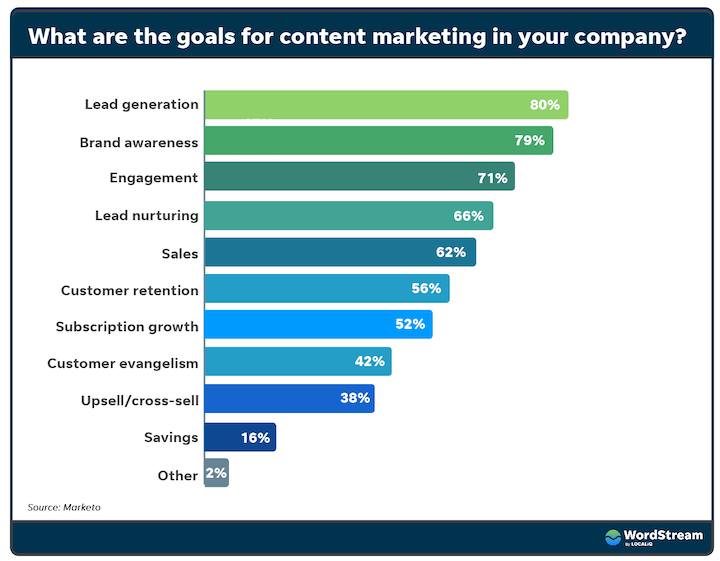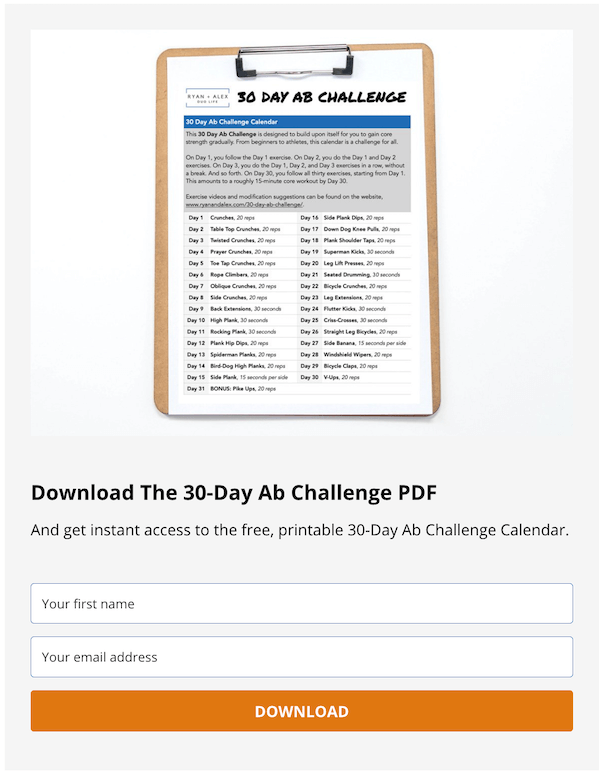Content is a must have for any business marketing strategy. It serves to educate your audience on your products and services, distinguish your brand voice, and even more importantly, get your audience into your funnel in the first place.
In fact, according to Marketo, lead generation is the top goal for 80% of content marketers.
So how do you generate leads with content? There are a number of ways, but gating content is one of the most effective.
Gated content comes in many forms, from worksheets and ebooks to webinars and videos. Use this guide to determine which type of content to create and how to do so in a way that adds value and helps you achieve your lead generation goals.
Table of contents
- What is gated content?
- Pros and cons of gated content
- How to create gated content
- Examples of gated content
What is gated content?
Gated content is any form of content that people (your target audience) can get in exchange for their contact information. More often than not, they share their name and email. This is a relatively easy way to generate more leads because you’re offering something of value that your ideal client or customer wants, rather than simply asking for their email outright or pitching your offer immediately.
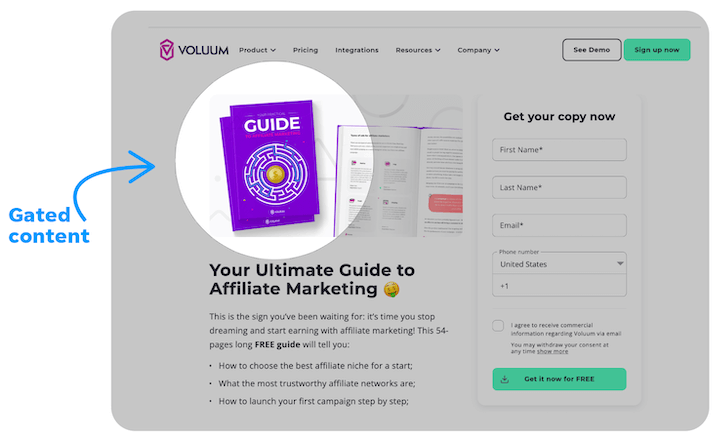
Gated content can come in nearly any form. Some of those most popular formats (also known as lead magnets) include:
- Guides/ebooks
- Checklists
- Worksheets/workbooks
- Audio recordings
- Videos (pre-recorded or live webinar)
- Case studies
The type of content is usually free and you’ll choose the format based on your industry and your target client or customer persona. For example, a CMO making an expensive purchasing decision is going to be more interested in a case study while a that shows what you do as a company rather than a checklist or guide.
The file itself can be uploaded to your website and therefore accessible via a website page, but that page is not accessible to website visitors. It can only be accessed once the user fills out a form.
That form can live on a landing page or even embedded in a blog post or main navigation page on your site. The option you’ll choose ultimately depends on the software you use and features offered.
Pros & cons of gated content
While gated content can be a valuable resource for driving leads, there are pros and cons to using this format.
Pros of gated content
- Lead generation: The primary reason for gating content is to generate leads. With your potential customers’ contact info, you can follow up with nurture emails, and if you collect other information on your form, you can cater your copy and subsequent offers to their preferences and circumstances.
- Inexpensive: With a proper content marketing strategy, creating gated content is inexpensive and therefore a high-ROI lead generation tactic.
- Build trust: If a user finds a resource worth exchanging their contact information for, this indicates they find value in it, which helps enhance your brand authority.
If you’re looking for more great marketing strategies, look no further:
Free guide: The 17 Best Marketing Strategies for Any Business
Cons of gated content
There are a few cons to consider as well.
- Barrier to entry: Having to share contact information might deter some people from actually accessing the resource. If this is a case study that can help someone make a purchasing decision, for example, you might stand to lose more than you gain. Then again, if a person isn’t interested enough to provide their contact information, this is a good way to filter out unqualified leads.
- SEO: In addition, gated content is typically shared in the form of a downloadable PDF or other media type. As such, the text isn’t on the webpage itself, meaning you can’t optimize it for SEO or use it for generating traffic.
There are ways around this, however. For example, you can optimize the landing page for those keywords and “sneak in” the high-quality long-form content required for the page to rank in the form of FAQs below the fold of the page.
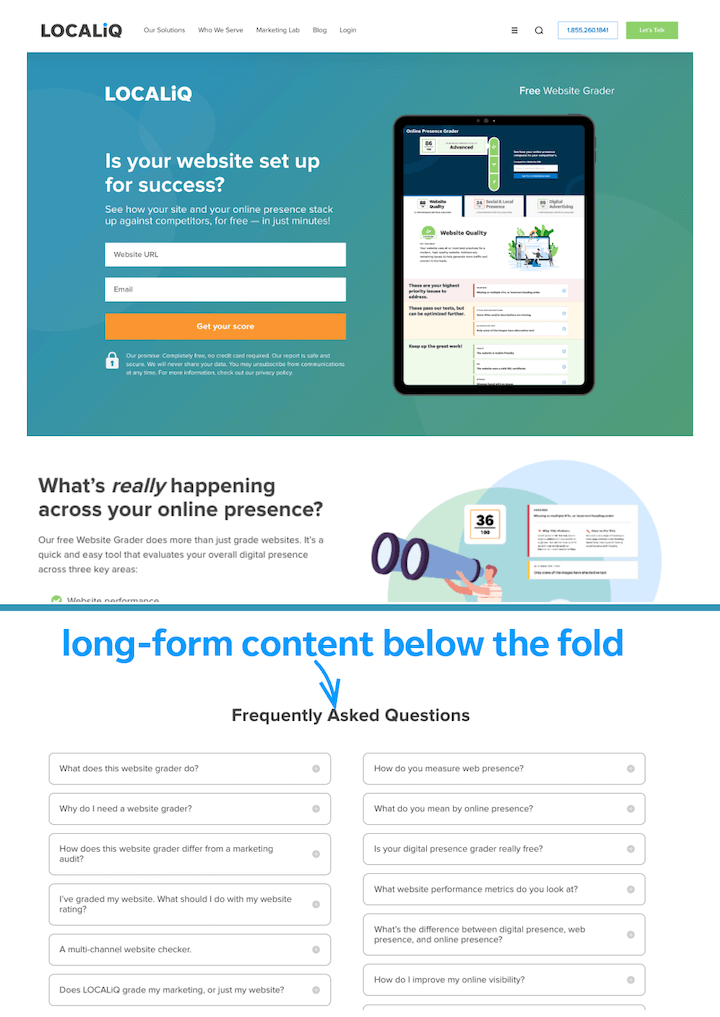
You can also use your ungated content to target high-volume keywords, and then promote gated content on those high traffic pages. This could even be a PDF version of the ungated content that has additional information and value.
How to create gated content in 7 steps
If you’re ready to generate more leads with gated content, there are a few important steps you need to take to ensure it actually achieves that goal. Use these tips to make sure you create a resource that works.
1. Choose the right content
For someone to give their personal information, they have to really want what you’re offering. To figure out what they consider to be worthwhile, look at your blog traffic, customer and audience behavior, and even competitor resources that your current customers or clients find most valuable.
2. Determine the funnel stage
Figure out which stage of the funnel you’re targeting with this gated content. Over time, you’ll likely have options that fall within each stage. For example, a case study would likely be categorized as middle or bottom of the content marketing funnel because someone downloading a case study is more toward the evaluation and intent phases, rather than the awareness phase.
Knowing the phase you’re targeting will provide clarity around the type of resource you should create.
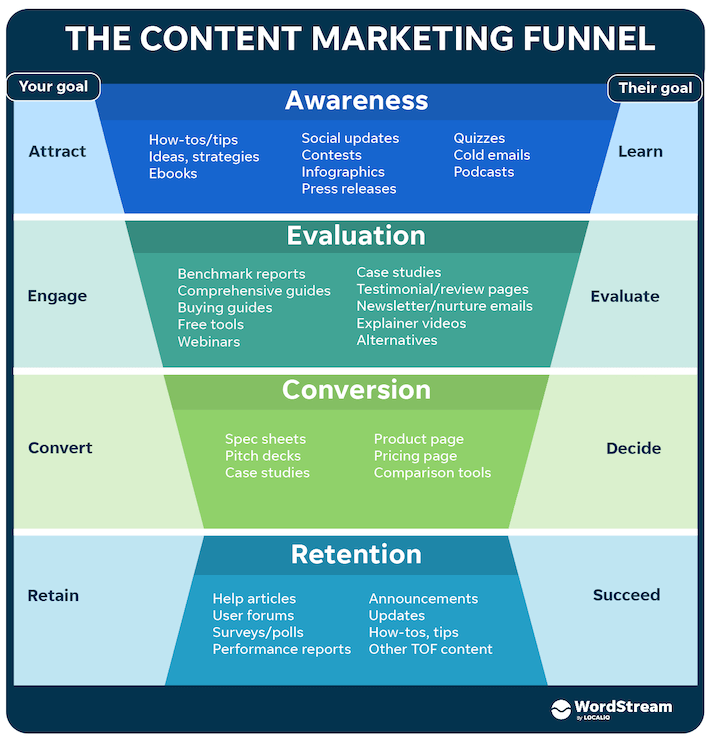
3. Create a strong landing page…
Your landing page contains information about the content that the visitor needs in order to decide whether to download it, as well as the form to obtain it. To optimize your landing page for conversions, you need a strong hook, compelling copy, and very little clutter so the visitor is encouraged to fill out the form.
Here are some landing page examples to give you some ideas. If your landing page is indexed (i.e., it can appear on Google), you’ll need to take care of all the on-page SEO best practices.
4. … and thank you page
This, of course, is the page the user is redirected to upon completing the form and is the most important part of the lead generation process. This page either contains a button to download the PDF or media file, or it lets the user know what to do next—like check their inbox. You can even put a secondary, lower-funnel offer on your thank you page as a way to even further qualify an engage your lead.
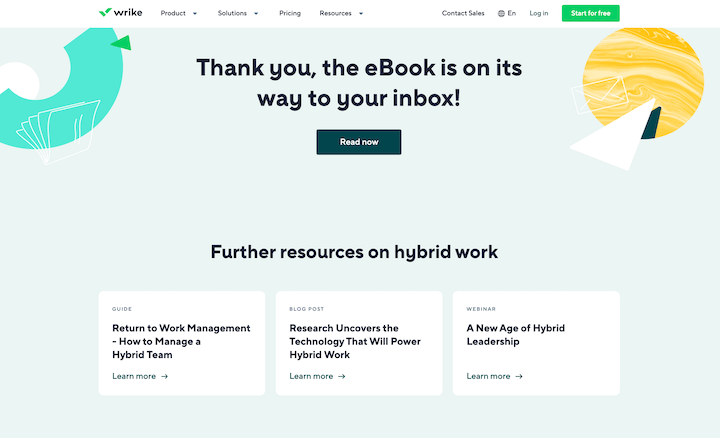
And if you don’t have a marketing automation platform, you can use pageviews of the thank you page to see how many times something was downloaded.
5. Deliver on your promise
If the person doesn’t get what they were promised, you end up hurting your brand more than helping it. Think about it: if a person fills out a form to get an ultimate guide on something, only to find that it’s not a comprehensive piece of content on the topic, you’ve now lost their trust, and any nurturing tactics you had planned are not going to work.
6. Follow up with and nurture your leads
This is one of the most important pieces because, once you have your leads, you need to get your offer in front of them. Depending on your product and sales process, this could look like creating a nurture flow that continues to deliver value, while educating them on what you offer, for a certain number of days, weeks, or months after.
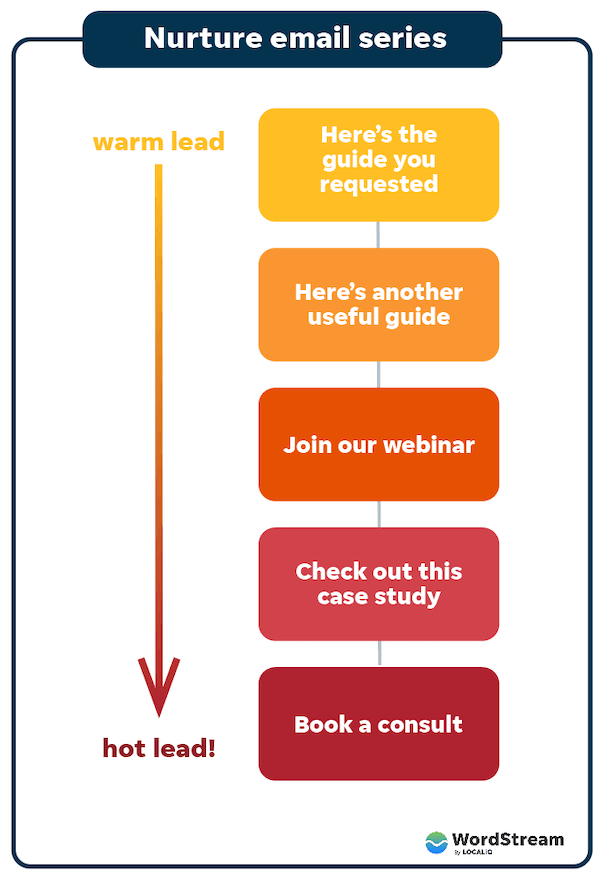
If sales calls are an important part of your selling process, your goal with these emails is likely then to get those who’ve accessed the resource on a call. As such, all your emails are guiding the recipient to book that call.
7. Measure success & iterate
As with anything in marketing, it takes time to get your gated content strategy right and optimize for the best results. Use data from Google Analytics, your CRM, and other marketing automation tools to understand how successful the campaign was and then leverage that data to create gated content that works even better.
Examples of gated content
If you’re not sure where to start, use these examples of gated content and their associated landing pages to create a valuable resource that generates leads. In each of these examples, notice how the landing pages are simple, concise, and persuasive with a large lead form to encourage conversions.
1. WordStream’s 120 Words & Phrases List
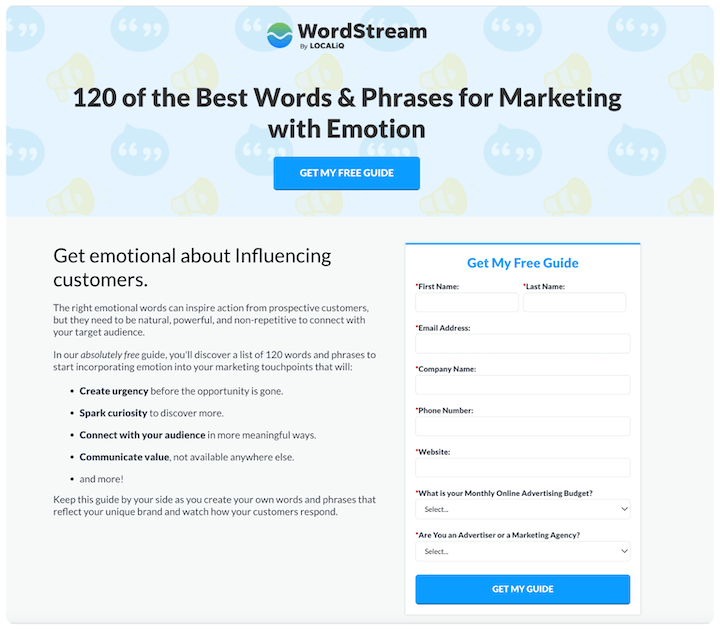
WordStream’s 120 of the Best Words & Phrases for Marketing with Emotion is a great example of the type of content that typically generates a lot of interest: a list. Marketers are always looking for ways to write more compelling copy and a big list that makes their life easier is a valuable resource.
2. HR.com’s Performance Management Research Report
HR.com releases gated content in the form of research reports on a regular basis—like its Future of Performance Management Report. For some organizations, this is a great way to drive leads and maintain thought leadership within the industry.
Notice how further down on the page they share insights from the report—but these are below the CTA and download button to provide further incentive to download without cluttering the conversion.

3. Content Marketing Institute’s Content Gaps Webinar
Rather than providing a written piece of content, Content Marketing Institute’s “Find Your Gaps” webinar is a pre-recorded webinar that the user can access on demand. You can also do this with live webinars if you want to sell your product or service to an active audience. Follow our webinar tips to make this a success.
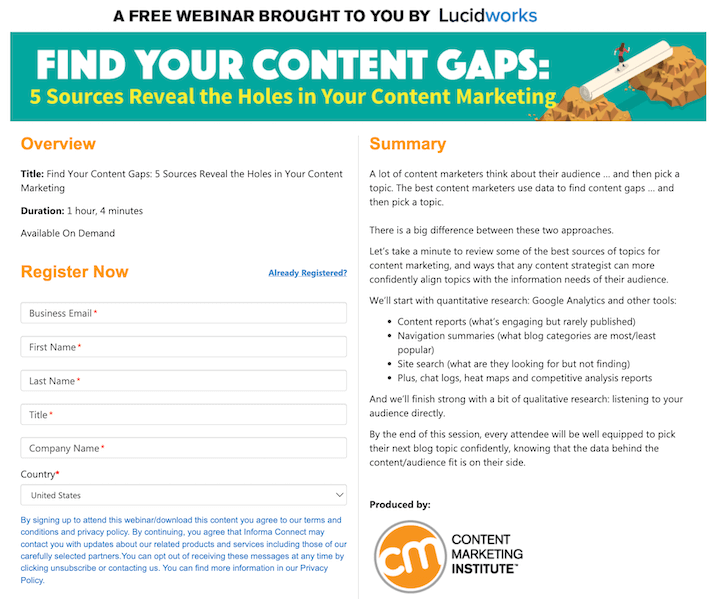
4. Ryan and Alex’s PDF Calendar
Ryan and Alex created a 30-day ab challenge, wrote an in-depth piece of content on it, and then embedded the PDF calendar version in that content. This is a great way to drive leads because, as a key resource for completing the challenge, users are more encouraged to download it. This also shows how you can embed your gated content within a blog post (which can rank on Google and generate traffic), rather than creating a solo landing page.
5. McKinsey’s customizable Inclusive Growth Report
McKinsey’s Accelerating Sustainable and Inclusive Growth report provides some great landing page ideas here, using video in the header of the page and allowing you to customize what information you get in your download. It also has multiple CTA buttons on the page that all lead to the form, which is important when you have a lot of content on the page.
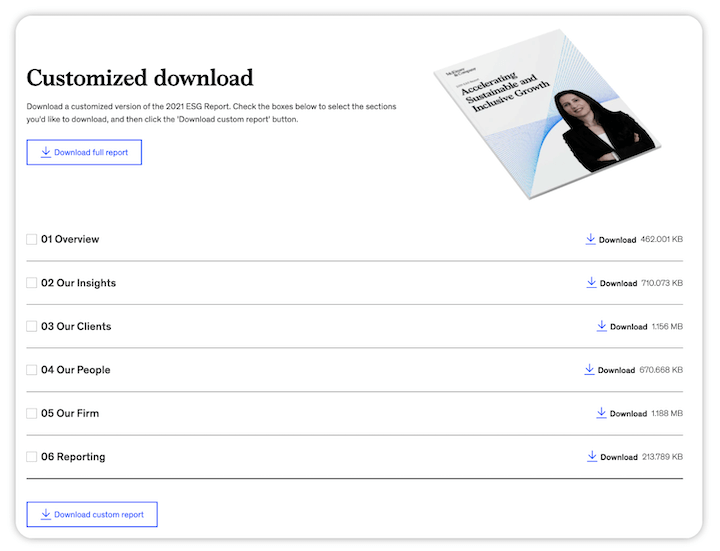
Start generate leads with gated content
Gated content is an effective lead generation tool for nearly any business. You provide value for your potential customers while they give you access to their contact information so you can build the relationship. When done well, it’s a way to offer value and build thought leadership while also growing the pipeline. Here’s a recap on how to do it right:
- Choose the right content
- Align it with the stage of the funnel
- Create a strong landing page
- Create a thank you page
- Deliver on your promise
- Follow up with your leads
- Measure and iterate

